How to Fix the STOP Code 0x0000000a in Windows?
The BSOD error 0x0000000a in Windows is caused when the users connect their systems to a domain or sometimes during the Windows startup process. In some cases, it causes the system to reboot, but the error appears again after the computer has started.
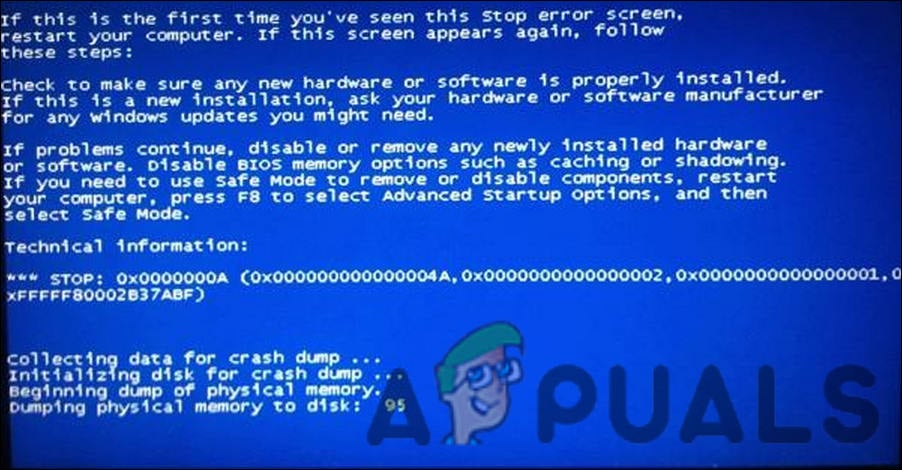
There can be several reasons behind this issue, such as a corruption error within the system, hardware problems, and a corrupt system service. Below, we have discussed several troubleshooting methods that you can try to fix the problem.
1. Disable the WebSense EndPoint Software (If Applicable)
In case you are encountering the said BSOD upon attempting to connect to a domain, then the problem can be caused by the WebSense EndPoint software installed on your computer. If you have this program, uninstalling it should resolve the issue once and for all.
To remove it from the system, we will be using the Control Panel. Follow the steps below to proceed:
- Type Task Manager in Windows search and click Open.
- In the Task Manager window, locate the WebSense EndPoint service and right-click on it.
- Choose End task from the context menu.
- Once done, press the Win + R keys together to open Run.
- Type control in the text field of Run and hit Enter.

Type Control in the text field - Choose Uninstall a program under Programs.

Click on Uninstall a Program - In the following window, locate the WebSense EndPoint software and right-click on it.
- Choose Uninstall from the context menu.

Uninstall the service - Follow the on-screen instructions to proceed and then restart your PC.
Upon reboot, hopefully, you won’t face the BSOD error again.
2. Run an SFC and DISM Scan
A good way to rule out corruption issues within the system is by using the built-in troubleshooting tools provided by Windows. Two powerful tools that can help with the BSOD errors like the one under discussion are the System File Checker and Deployment Image Servicing and Management.
Using the sfc scan command, you can check all protected system files and replace corrupted files with a cached copy in the %WinDir%/System32/dllcache folder. WinDir represents the operating system folder in Windows.
DISM command scans the operating system for corruption and repairs any problems it finds.
Here is how you can run both scans to identify and resolve the corruption errors within the system:
- Press the Win + R keys together to open a Run dialog box.
- Type cmd in the text field of the dialog box and press Ctrl + Shift + Enter to launch Command Prompt with administrative privileges.
- In the Command Prompt window, type the command below and press Enter.
sfc /scannow
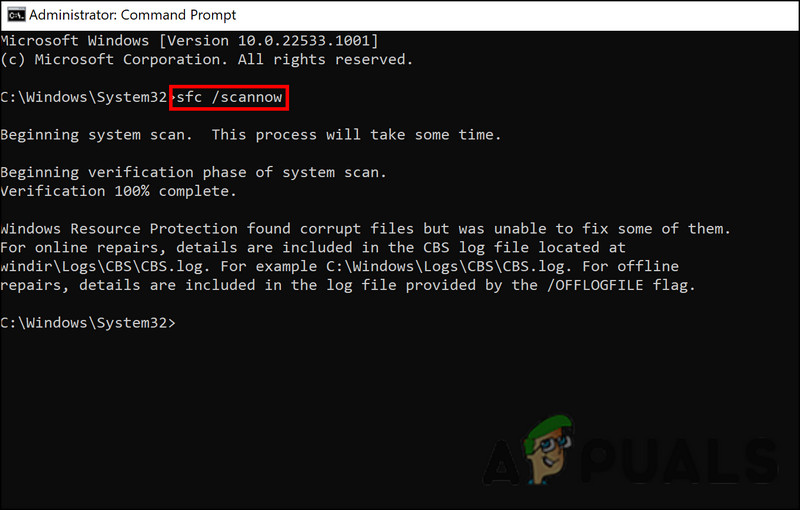
Run the System File Checker scan - Wait for the command to be executed successfully and once it is done, execute the following command in the same window.
DISM.exe /Online /Cleanup-image /Restorehealth
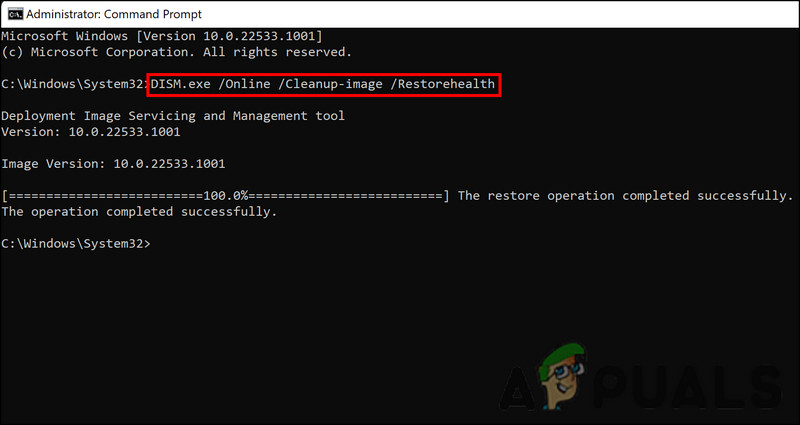
Run the RestoreHealth command - Finally, restart your PC and check if the error is resolved.
3. Update Your Drivers
Your next step should be to update the outdated drivers on your system. For this, you can head over to the Device Manager utility and check for outdated drivers there. If an outdated driver is identified, you can either replace it with an updated version present in the system to download an alternative from the manufacturer’s website.
To check if the drivers are up-to-date, visit the manufacturer’s website and compare the latest version with the one in Device Manager.
Here is how you can update Windows 11 drivers once you’ve identified the outdated drivers:
- Type Device Manager in Windows search and click Open.
- The outdated driver might have a yellow exclamation mark in the Device Manager window. Look for such drivers and right-click on them.
- Choose Update driver from the context menu.
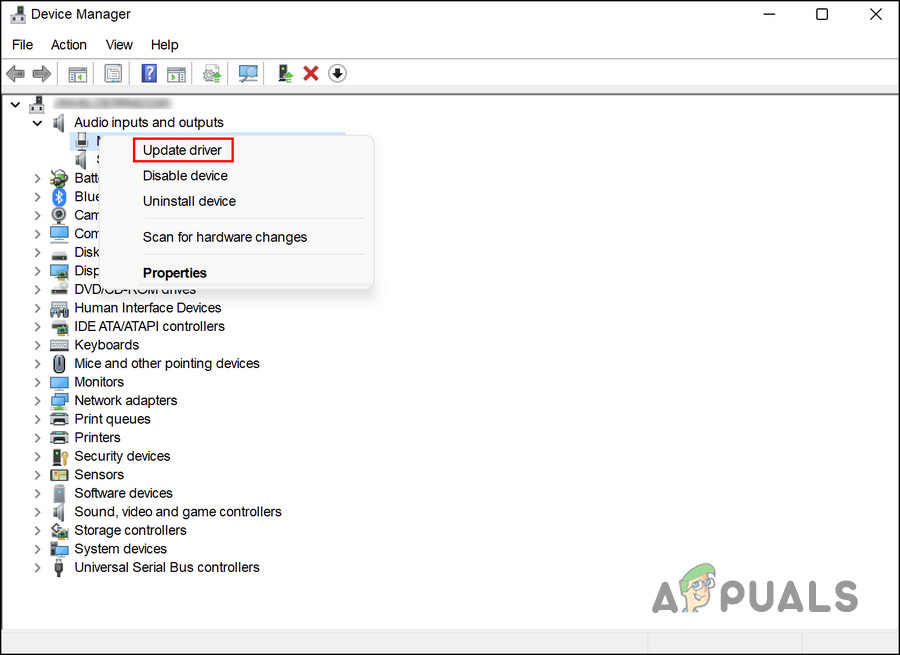
Update your driver - In the following dialog, click on Search automatically for drivers. An updated driver check will be performed by the Device Manager utility.
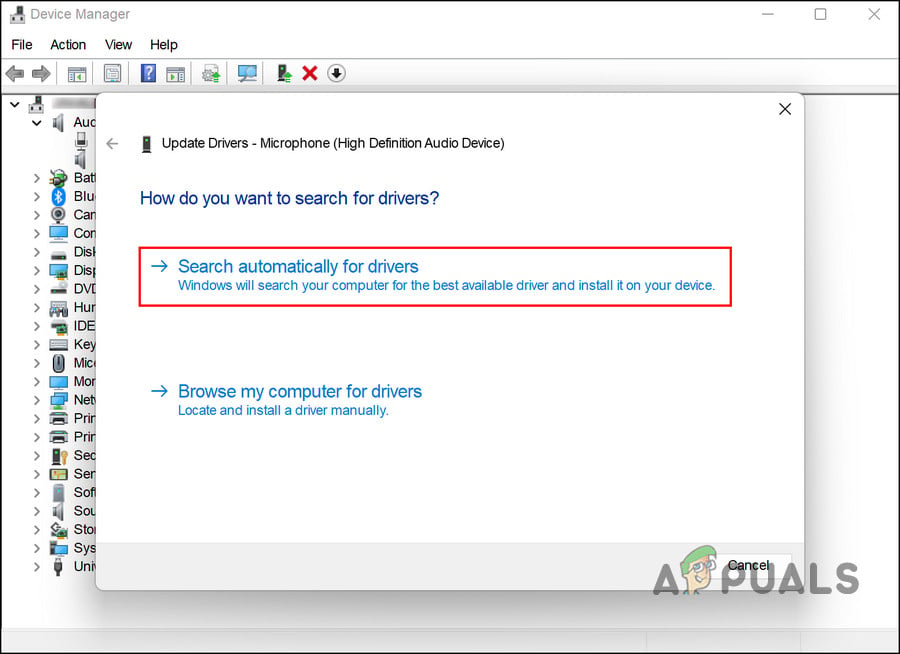
Search the system for drivers - The system will inform you if there is an updated driver available. Follow the instructions on the screen to install it.
- Once you have installed the updated version of the driver, reboot your PC.
- If the error returns after rebooting, select Update driver again from Device Manager.
- Select Browse my computer for drivers > Let me pick from a list of available drivers on my computer.

Pick a driver from the list of options available manually - Manually look for the updated version of the driver and install it. If you cannot find one, head over to the manufacturer’s website and download the latest driver version from there.
- After the download is complete, install the driver.
- If the issue persists, restart your computer.
4. Use System Restore Utility
In Microsoft Windows, System Restore provides a means of protecting and repairing computer software. It creates restore points by taking a “snapshot” of the Windows registry and system files.
Consider it as Windows’ version of an “undo” feature. By using it, you can restore certain files and settings – such as drivers, registry keys, system files, and installed programs – to their previous versions. For example, if weird things happen to your computer after installing a driver, you might find that restoring the system to a previous state before the driver install fixes things because System Restore undoes all the changes.
Follow the steps below to proceed:
- Type Control Panel in Windows search and click Open.
- Search for System restore in the top-right search bar in the Control Panel and click on Create a restore point from the results.
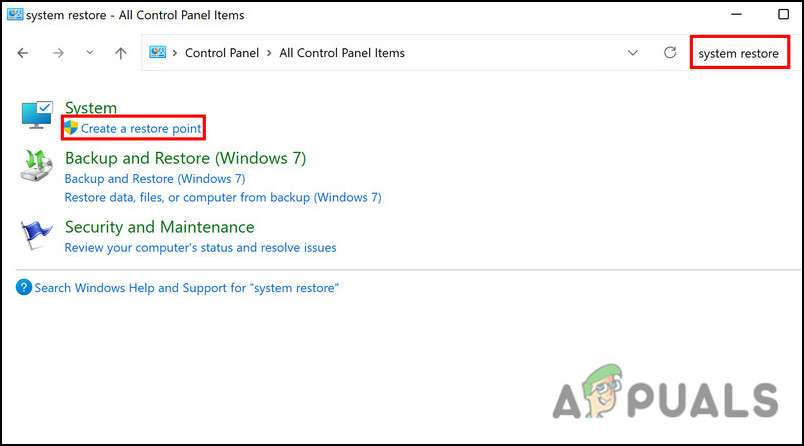
Create a restore point in Control Panel - Click on the System Restore button in the next dialog box.

Click on the System Restore button - Choose the most recent restore point from your system restore points and click Next.
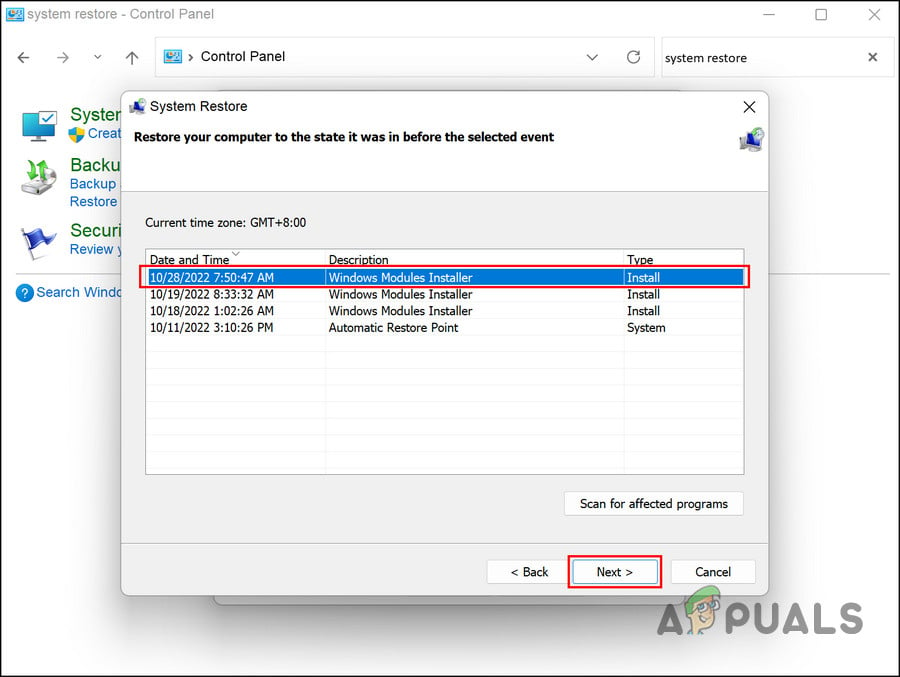
Click on the Next button - Follow the on-screen instructions and when the computer reverts to a previous state, you should have the issue fixed.
5. Reset or Clean Install Windows
In the event that none of the troubleshooting methods work, you can clean install or reset Windows.
Windows allows you to keep your files and folders after a reset, so your files won’t be deleted. However, if you want to proceed with a clean install, we recommend saving your files elsewhere. If you do not want to yet proceed with these methods, then you can contact a Microsoft professional and report your issue to them. They will assist you in finding the cause of the issue and suggest relevant fixes.





